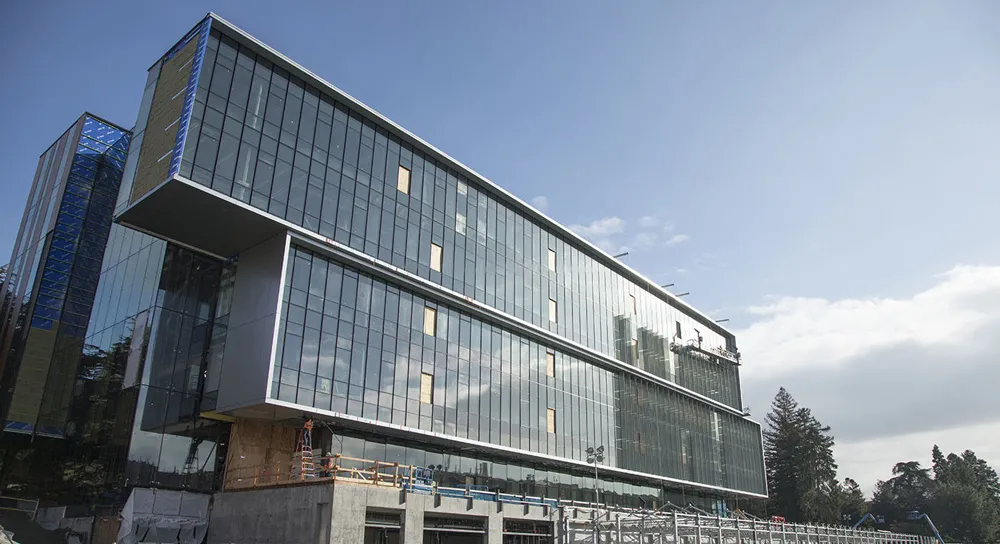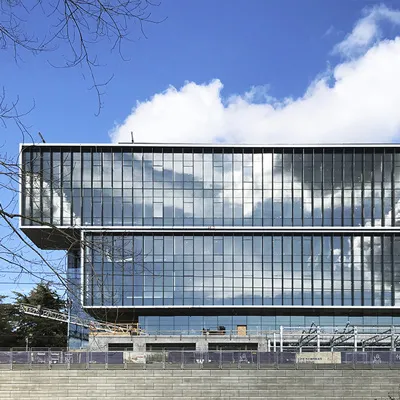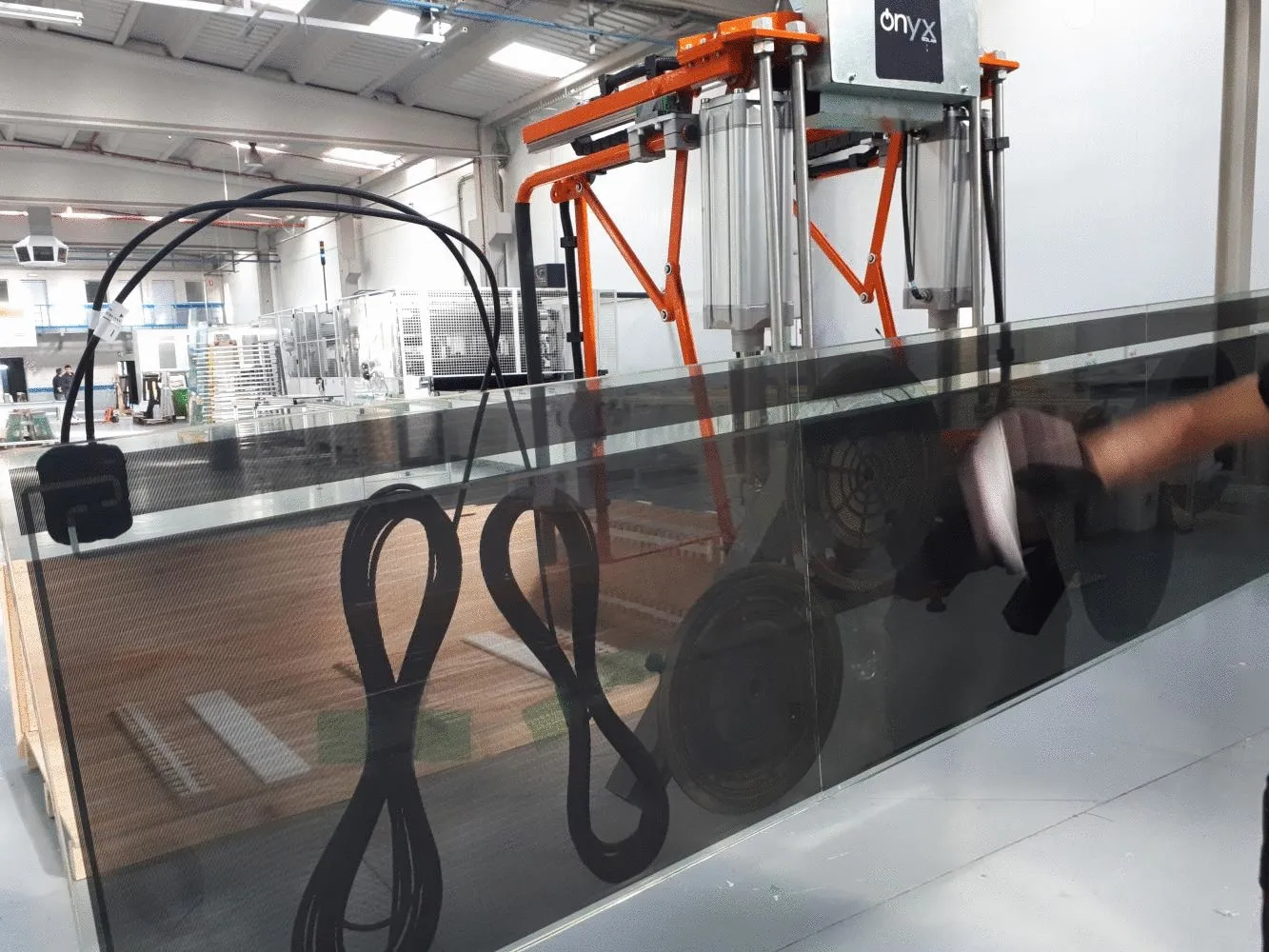While conventional glass or metal fins help the building from a passive standpoint, photovoltaic fins pay a multi-functional approach:
The building has been designed by architects Perkins + Will, and it is a seven-story construction – including two stories below grade, which has been envisioned as a benchmark project regarding energy efficiency, innovation, and onsite renewable energy.
The design targets LEED-NC Platinum Certification, and the deployment and usage of clean energy sources were a primary objective of the University´s Climate Action Plan for Sustainability.

In this sense, the UW-Solar student group, which consists of an interdisciplinary team within the University’s Urban Infrastructure Laboratory – ranging students from undergraduate to Ph.D. level, worked with Perkins + Will to design and install a combined 100 kW solar system, featuring an innovative vertical photovoltaic fin system installed on the South-West elevation of the building.
These PV fins are the first-of-its-kind in the USA and they are made of amorphous Silicon solar cells that capture the sunlight and converts it into clean electricity.
They are all-glass, semi-transparent, letting 20% visible light to pass thru the fin.
 While conventional glass or metal fins help the building from a passive standpoint, photovoltaic fins pay a multi-functional approach:
While conventional glass or metal fins help the building from a passive standpoint, photovoltaic fins pay a multi-functional approach:
- They work as a sun control device, helping decrease HVAC needs.
- The South elevation of the building is set to receive high solar radiation in summer and the photovoltaic fins will help to shade the building and thus reducing the heat transfer.
- They work as windbreaks in winter, boosting the insulation of the building.
- They diffuse light and control glare, contributing to more comfortable daylight conditions.
- Their solar cell coating filters 99% UV radiation, mitigating the interior’s aging.
- They generate free and clean electricity, decrease the building’s carbon footprint, and contribute to LEED Certification.
- Also, they perform under low-light conditions.
- They aesthetically blend with the rest of the architectural design.
- They do not look like traditional PV panels but like conventional glass fins.
Each fin consists of a three-ply laminated, tempered glass, and it offers 3.15 Watts per square foot. They are frameless and were installed vertically, perpendicularly (90-degree angle) to the curtain wall. Concealed junction boxes and wires do perfect the architectural design.

Both the fin´s depth and the horizontal distance from fin to fin was carefully analyzed by Perkins + Will and Onyx Solar, to optimize the performance of the system and help to prevent self-shading situations that could impact the output.
The PV fins were tested to UL standards and they are set to start generating power as soon as the electrical interconnection is completed. The lobby of the building will feature a dashboard that will let students and visitors learn from the system, and monitor the energy production in real time. They will be able to compare the building’s energy demand against the renewable energy sources onsite and explore the model.
The photovoltaic fins will be highly visible from Pacific Avenue, which will help to raise student and visitor awareness about sustainability and innovation. If you are interested in getting more information about this product and other photovoltaic glass building materials by Onyx Solar, please contact us! Comments are welcome!
Client: the University of Washington, Department of Biology
Architect: Perkins + Will
General Contractor: Skanska
Electrical Designer: AEI
Electrical Contractor: VECA
Glazing Contractor: Mission
Glass Photovoltaic fins designer and manufacturer: Onyx Solar
Special mention to the UW-Solar Group, led by Alex Ratcliff.
Autor: Diego Cuevas - Global Business Development Americas for Onyx Solar Energy
